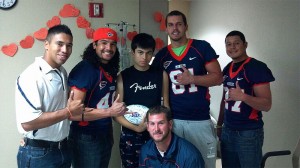EL PASO, Texas — Love of chemistry goaded Dr. George McLendon to move from investigations in quantum biology to research in cancer therapy. After receiving his B.S. (magna cum laude) from The University of Texas at El Paso in 1972 and a Ph.D. from Texas A&M in 1976, McLendon taught at Princeton University and the University of Rochester where he became an expert on a protein called Cytochrome C.
Addressing the students and faculty of the College of Science at UTEP this March, McLendon said, “Life has a funny way about teaching you things.” He explained that before he became the Dean of the Trinity College of Arts and Sciences at Duke University in 2004, he was just a chemist interested in researching and learning more about the Cytochrome C protein. Through his fundamental research in tandem with Dr. Chi-Huey Wong at Tetralogic Pharmaceuticals, a biotechnology company that works on cancer diagnostics and therapeutics, McLendon discovered how the Cytochrome C protein affects apoptosis (program cell death) in cases where not enough infected cells die off–as in cancer. McLendon explained that in his research, he is mainly concerned with finding out the therapeutic ratio–the amount of cancer cells that die to normal cells that die in the cell binding process. He said, “By understanding the underlying biology, we’re able to get a much better therapeutic ratio than anyone one else has been able to get to.”
Focused on curing lymphomas in humans, Dr. McLendon’s experiments have shown that the binding of Cytochrome C with the other appropriate protein cells has worked to cure every type of cancer in his controlled studies with lab mice.
